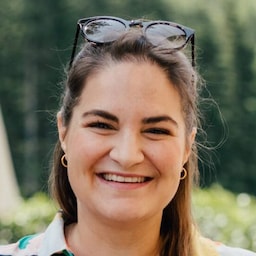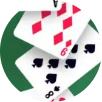Amberg Castle
On the trail of viticulture in Feldkirch
Wine from Vorarlberg is still considered exotic by many. However, its cultivation has a long tradition. Vines have been cultivated at Amberg Castle in the Montfort town since the Middle Ages.
Whether at the foot of the Gebhardsberg, in Röthis or in Walgau - wine culture is cultivated in a number of places in the Ländle. The quality of the wines should not be underestimated - even if the quantities produced are limited.
Friends of fine wines met again at the Vinobile wine fair in Feldkirch at the weekend. The Montfort town is also the perfect place for this because it is one of the historical centers of winegrowing in the region. Vines have been planted at Amberg Castle since the Middle Ages, as Anna Zillinger-Scheyer, daughter of the castle's lord Mathias Scheyer, reports. This is documented by a deed of sale from 1454. In 1541, Friedrich Maximilian, the son of Emperor Maximilian and Countess Anna von Helfenstein, acquired the vineyards around the castle as well as other neighboring estates. Later, the Swiss Baron von Traves, among others, cultivated the surrounding vineyard and the associated Torggel.
The family upholds the winegrowing tradition
The current owners - the Scheyer family - have revived this wine-growing tradition. Mathias and Jutta Scheyer's interest and love of wine grew during their studies in Innsbruck and while "Törggelen" in South Tyrol. In 1986, they decided to start growing wine on the Schlosshang again: Pinot Noir and Riesling Sylvaner.
600 years of viticulture on the Amberg
A deed of sale proves that viticulture has been practiced at Amberg Castle since 1454: "Our vineyard, called the Leutold, situated on the Zillis," the document states.
For many years, the Scheyer couple, together with their daughters Julia and Anna as well as relatives and friends, took all the winegrowing into their own hands - from tending the vines to harvesting and ageing in the house cellar. The Scheyer family still carries out all the care and harvesting work themselves. However, due to the improved infrastructure and cellar technology, the wine is now bottled in cooperation with various winegrowers. "As we only produce a small quantity, it would not have been worth investing in cellar technology," explains Anna. For example, depending on the year and sugar content, the Pinot Noir grapes are made into wine or a "Blanc de Noir" sparkling wine together with the renowned Vorarlberg winegrower Michael Moosbrugger from Schloss Gobelsburg in Langenlois. On the day of harvest, the grapes are placed on ice and driven to Langenlois on the same day, where they are processed fresh. "This is the first Vorarlberg sparkling wine made using the champagne method. A really great product," enthuses Zillinger-Scheyer with audible pride. Moosbrugger is also enthusiastic about the quality of the wines from the region.
The interest in high-quality products from Vorarlberg is there. Even though we are still "hidden champions", the quality of the products is impressive.

Anna Zillinger-Scheyer
Bild: Stefanie Laesser
A person is assigned to each product
However, the driving force behind winegrowing is still Mathias Scheyer, who is also immortalized on the labels. "The personalities on the product labels are always closely related to the product and tell a story," explains the young lady of the castle. Great-grandmother Maria Mechthild is depicted on the sparkling wine bottles. She was the grand dame of the castle. She often hosted coffee parties and was well connected with Feldkirch society. Of course, there was a good glass every now and then. Great-grandfather Fidel, meanwhile, planted standard apple trees that will soon be 100 years old. The apples are used to produce their own cider and juice.
Although the château products are a rare commodity due to the small quantity, there are still opportunities to taste them at various Wine&Dine events and to purchase them from the farm. The aim is for the wines and sparkling wines to soon find their way into regional gastronomy. The cozy Heurigen, which takes place every year in September, is particularly popular with visitors, reports Anna: "The uncomplicated atmosphere with high-quality, regional products is very much appreciated."
The vaulted cellar at Amberg Castle is also very impressive, housing real wine treasures and tempting visitors to taste them. Interest in local products is growing steadily, as Anna Zillinger-Scheyer emphasizes: "You can tell that the people of Vorarlberg are proud that the region produces such good products. It's definitely worth exploring even the lesser known!"













Kommentare
Liebe Leserin, lieber Leser,
die Kommentarfunktion steht Ihnen ab 6 Uhr wieder wie gewohnt zur Verfügung.
Mit freundlichen Grüßen
das krone.at-Team
User-Beiträge geben nicht notwendigerweise die Meinung des Betreibers/der Redaktion bzw. von Krone Multimedia (KMM) wieder. In diesem Sinne distanziert sich die Redaktion/der Betreiber von den Inhalten in diesem Diskussionsforum. KMM behält sich insbesondere vor, gegen geltendes Recht verstoßende, den guten Sitten oder der Netiquette widersprechende bzw. dem Ansehen von KMM zuwiderlaufende Beiträge zu löschen, diesbezüglichen Schadenersatz gegenüber dem betreffenden User geltend zu machen, die Nutzer-Daten zu Zwecken der Rechtsverfolgung zu verwenden und strafrechtlich relevante Beiträge zur Anzeige zu bringen (siehe auch AGB). Hier können Sie das Community-Team via unserer Melde- und Abhilfestelle kontaktieren.